Juicy Prime Rib Roast Recipe: Cooking Joy Made Simple
Prime rib roast ignites culinary passion, transforming ordinary dinners into extraordinary feasts of flavor and elegance.
This majestic cut beckons meat enthusiasts with its promise of tender, succulent perfection.
Professional chefs and weekend warriors alike revere its rich, robust character that speaks volumes about cooking mastery.
Selecting premium beef and understanding nuanced roasting techniques separate good meals from unforgettable experiences.
The magic happens when careful seasoning meets precise temperature control, creating a symphony of taste that dances across your palate.
Minimal ingredients, maximum impact, that’s the hallmark of this stunning dish.
Get ready to elevate your cooking game and become the hero of your next dinner gathering.
Quick Recipe Overview
Ingredients for a Classic Prime Rib Roast
For Meat Base:For Herb and Spice Blend:For Supporting Ingredients:Prime Rib Roast Tools for Perfect Results
How to Cook a Juicy Prime Rib Roast
Unleash Mouthwatering Prime Rib Magic
Rescue your prime rib from the refrigerator an hour before cooking. Let it chill at room temperature, wrapped loosely. Sprinkle salt generously across every surface to create a flavor foundation that promises deliciousness.
Whip together a sensational herb blend of crushed garlic, fragrant rosemary, earthy thyme, cracked pepper, and a splash of olive oil. This magical mixture will transform your roast into a culinary masterpiece.
Gently pat the meat dry, then lovingly massage the herb blend into every nook and cranny. Nestle the roast bone-side down in a cast iron pan, positioning it for maximum flavor development.
Blast the roast at a scorching 500 degrees for 15 minutes, then drop the temperature to a gentle 325 degrees. Use a meat thermometer as your flavor compass:Rescue the roast from the oven just before it hits your target temperature. Wrap it in foil and let it rest for 30 magical minutes. This crucial step allows juices to redistribute, ensuring each slice is incredibly succulent.
Carve against the grain into tantalizing half-inch slices. For an extra flavor punch, serve with a zesty mustard on the side. Prepare for a dining experience that will have everyone singing your culinary praises.
Flavorful Tips for Prime Rib Perfection
Serving Suggestions for Prime Rib Dinner
Planning and Storing Prime Rib Leftovers
Print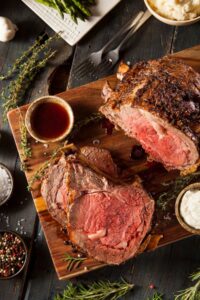
Succulent Prime Rib Roast Recipe
- Total Time: 1 hour 10 minutes
- Yield: 5 1x
Description
Prime rib roast from classic American kitchens promises a luxurious centerpiece for special gatherings. Juicy, herb-crusted meat delivers rich flavors that will delight guests and create memorable dining experiences.
Ingredients
- 5 lbs (2.27 kg) beef prime rib
- ¼ cup (60 ml) olive oil
- 8 cloves garlic, minced
- 2 tsps freshly ground black pepper
- 2 tsps fresh rosemary
- 1 tsp fresh thyme
- sea salt
- horseradish (optional, for serving)
Instructions
- Preparation: Remove prime rib from refrigerator 1 hour before cooking. Generously season exterior with kosher salt, allowing meat to reach room temperature and enhance flavor absorption.
- Seasoning Fusion: Craft a robust herb blend combining ground black pepper, minced garlic, chopped rosemary, dried thyme, and extra virgin olive oil. Thoroughly pat roast dry and massage herb mixture comprehensively across entire surface.
- Oven Configuration: Position oven rack centrally. Preheat to 500°F (260°C) for initial high-temperature searing. Place bone-in roast in cast iron skillet with bone-side down, or set boneless cut on roasting rack to ensure consistent heat distribution.
- Roasting Technique: Sear at high temperature for 15 minutes to develop caramelized exterior. Reduce oven temperature to 325°F (163°C) for slow, even cooking. Monitor internal temperature using digital meat thermometer.
- Doneness Precision: Target rare at 120-125°F (49-52°C), approximately 10-12 minutes per pound. For medium-rare, aim for 130-135°F (54-57°C), about 13-14 minutes per pound. Remove roast when internal temperature is 5-10 degrees below desired doneness.
- Resting Period: Tent roast loosely with aluminum foil. Allow 30 minutes of undisturbed resting to redistribute meat juices, ensuring maximum tenderness and flavor concentration.
- Serving Presentation: Slice perpendicular to grain into ½-inch thick portions. Accompany with complementary condiments like whole grain mustard or horseradish sauce for enhanced culinary experience.
Notes
- Temper for Perfection: Remove prime rib from refrigerator one hour before cooking to ensure even heat distribution and consistent cooking throughout the meat.
- Salt Early and Generously: Coat the entire exterior with kosher salt to enhance flavor penetration and create a delectable crust.
- Herb Blend Magic: Create a robust seasoning mix with fresh herbs, garlic, and olive oil to elevate the meat’s natural flavors and add aromatic complexity.
- Temperature Precision: Use a digital meat thermometer to track internal temperature, removing the roast 5-10 degrees below desired doneness to account for residual cooking during resting.
- Prep Time: 10 minutes
- Cook Time: 1 hour 45 minutes
- Category: Dinner
- Method: Roasting
- Cuisine: American
Nutrition
- Serving Size: 5
- Calories: 400
- Sugar: 0 g
- Sodium: 500 mg
- Fat: 30 g
- Saturated Fat: 10 g
- Unsaturated Fat: 20 g
- Trans Fat: 0 g
- Carbohydrates: 0 g
- Fiber: 0 g
- Protein: 36 g
- Cholesterol: 120 mg

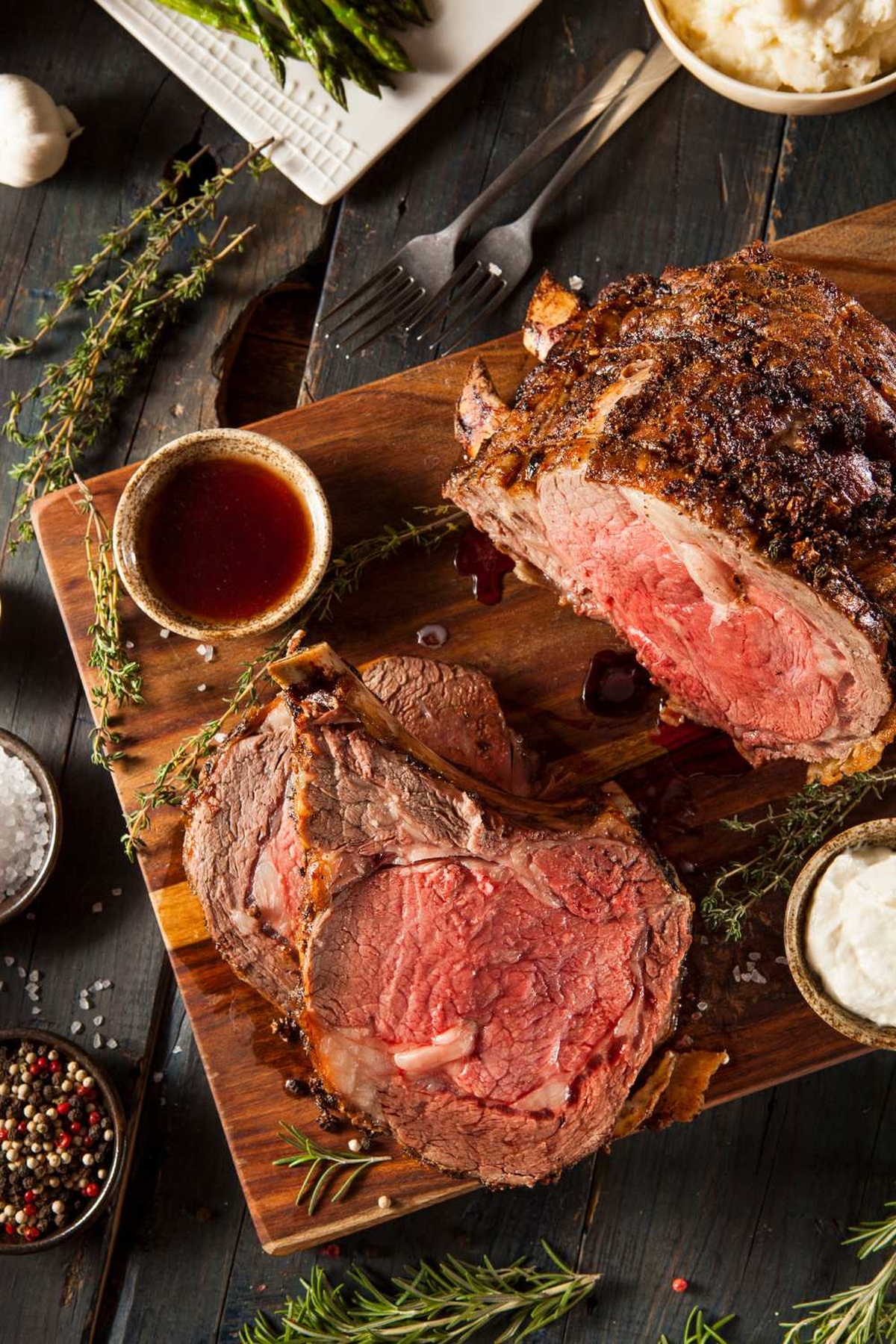
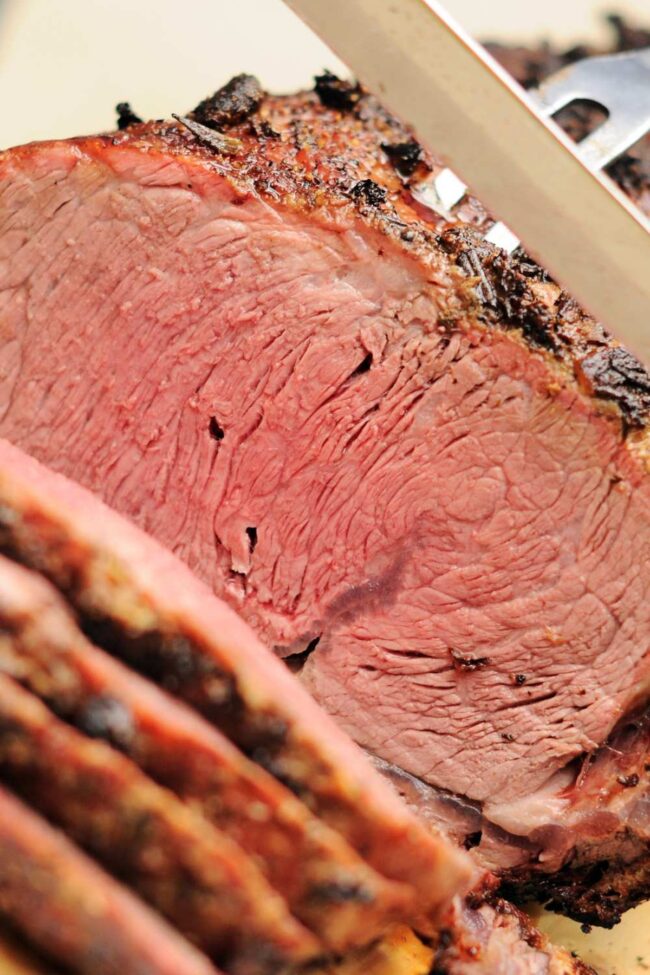

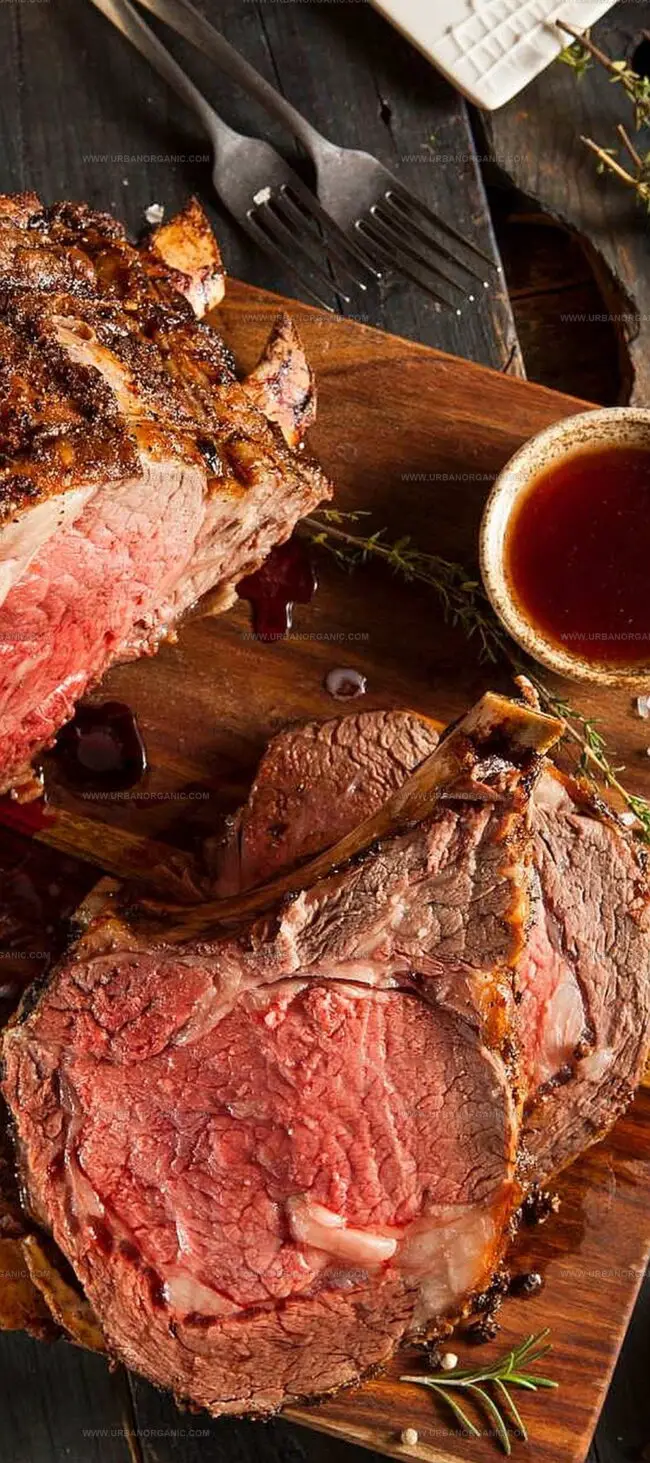
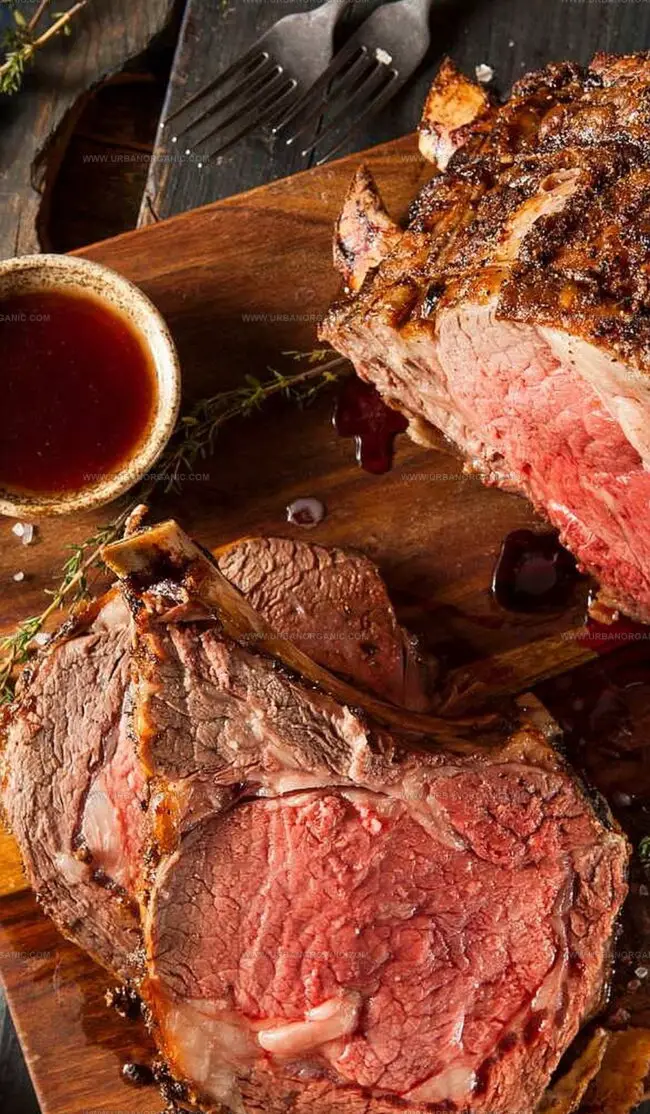
Michael Thompson
Founder & Culinary Director
Expertise
Classical & Contemporary Cooking Techniques, Global Cuisine Appreciation, Nutrition & Menu Engineering, Sustainable Cooking Practices, Farm-to-Table Cuisine
Education
Southwestern Oregon Community College
Michael grew up in Oregon, where he learned early that food tastes better when it’s fresh, local, and made with care.
After earning his degree from the Southwestern Oregon Community College, he focused his career on teaching others how to cook with the seasons, reduce food waste, and reconnect with what’s on their plate.
Michael keeps his cooking simple, sustainable, and full of flavor. His favorite part of the process? Watching people realize how easy and satisfying it can be to cook a single great meal from scratch.